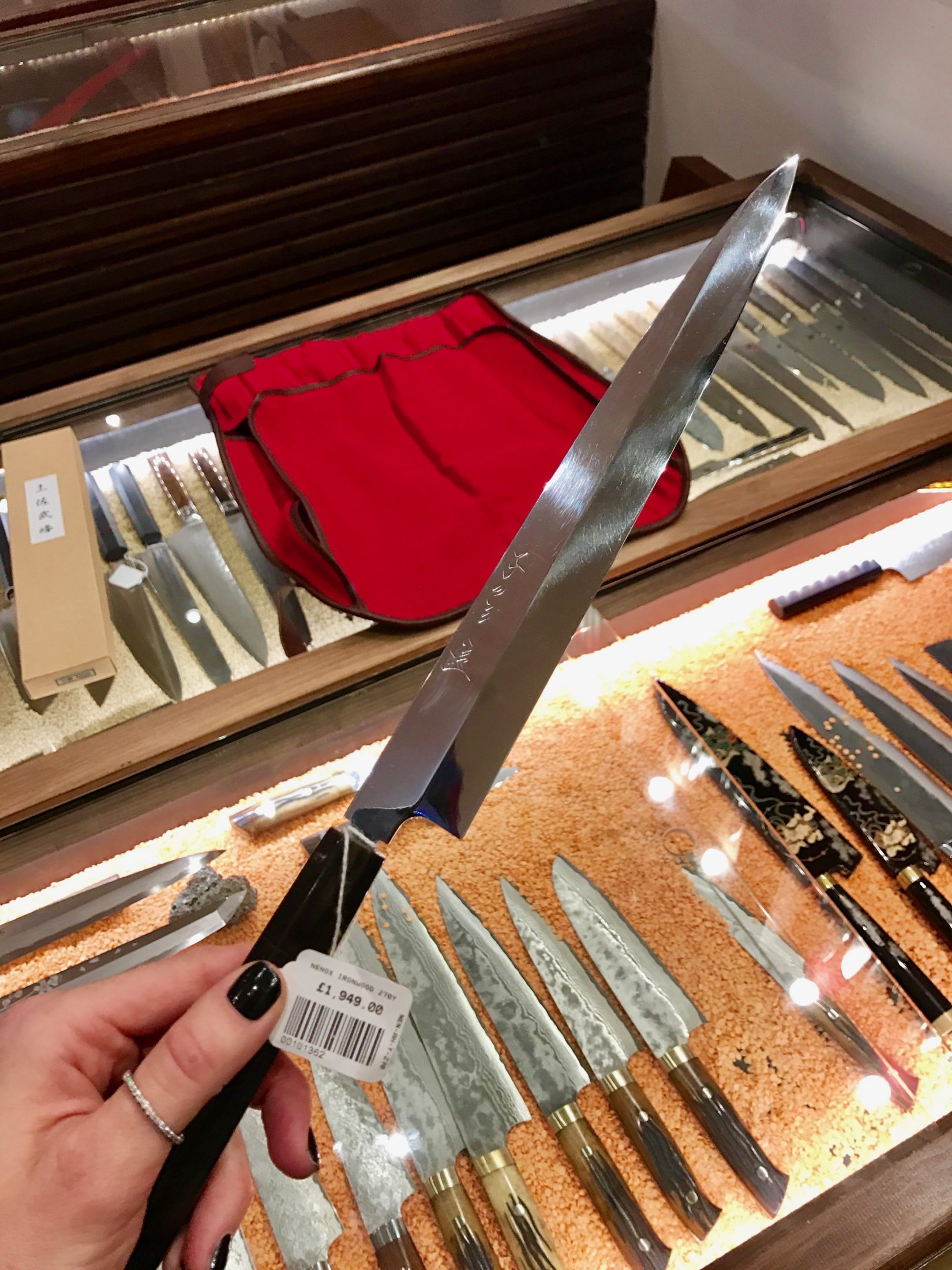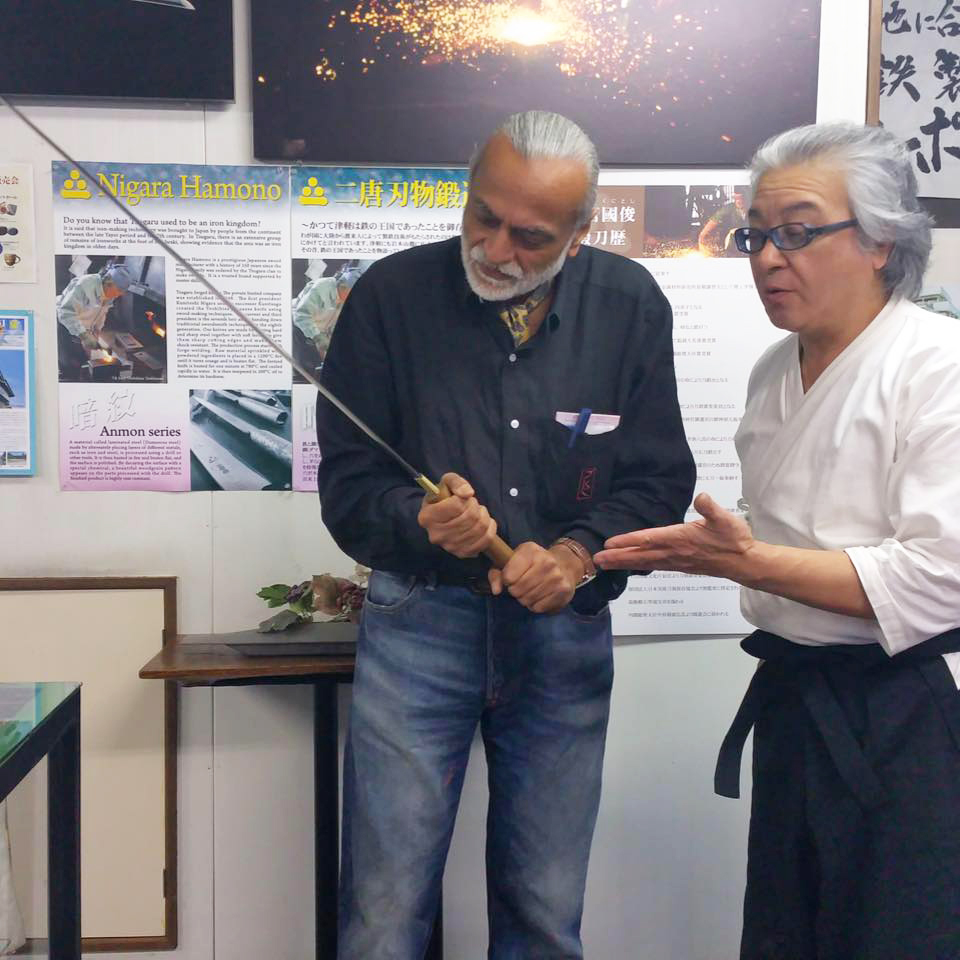|

Yanagiba by Nenohi
There is a big difference in taste between ingredients sliced with a sharp and a dull knife. Did you know that a sharp knife shouldn’t cause you much tears when chopping an onion?
I had the chance to talk with Patel when a friend of mine invited me to come with him to get his knives sharpened. I didn’t really see what the big deal was until I walked into Patel’s shop and saw his beautiful array of knives. A master craftsman himself, Patel has devoted his life to Japanese knives, which are sought after by the world’s best chefs. I asked Patel why that was. It’s a pretty long story, but it starts, like many things, with craftsmanship.
In the late 1800s, under the Meiji Restoration, Samurai were forbidden to carry swords. Japan’s blacksmiths turned their skills to cutlery production. The first knives were designed to cut tobacco imported from Portugal after Japan opened trade with the west; later innovations would give rise to modern day cooking knives like the santoku or sujihiki. In the traditional knife-making city of Sakai, knives are still handcrafted using forging techniques that take years, or even decades, to master. These techniques are derived from the same ones used 1000 years ago to make katana, or Samurai, blades. They give Japanese knives the combination of strength and elasticity that prevents them from chipping, but also makes them easy to sharpen.
Unlike European knives which are made from a single blade of steel, Japanese knives are formed from chunks of molten steel using one of two techniques: honyaki, which consists of high-carbon steel, and awase, a combination of high-carbon steel and soft iron. In both cases, the chunks of metal are pounded over and over again until they are perfectly mixed and all impurities have been removed. The steps to making a traditional Japanese knife are: forging (hizukuri); sharpening and honing (hazuke or togi), and hafting (ezuke), at which point the blade is attached to a magnolia-wood handle. A miscalculation in heat, or poor technique, and the knife will chip, the metals won’t bond, or the blade will be asymmetrical. Done right, and the result is a tool whose movement adds an element of flavor and aesthetic to a chef’s work. The attention to detail and perfection required to make a traditional Japanese knife is what compelled Patel to open his store. That,and a ruined yanagiba.
Jay Patel was not always into knives. After selling his successful kids fashion business, he threw himself into one culinary apprenticeship after another, studying in France, Italy, Lebanon, North Africa, Hong Kong,Vietnam,Japan…Upon leaving Japan, the owner of the izakaya where he spent several months working, gifted him a yanagiba, or sashimi knife. When an Italian knife sharpener in London ruined it, he was furious. “Why don’t you start your own knife sharpening business, then?” said his wife. So he did. After spending nearly seven years in Nangoku studying with a Japanese knife master, he returned to London to open his store in 1997. Today, his is the go-to store for serious chefs—and curious home cooks like me. Japanese Knife Company, which just opened a new shop in Saint-Germain in Paris, works with over 50 suppliers and has one of the biggest knives collections in the world. (Only Ichimonji near Osaka could be bigger.) Jay Patel still travels to Japan twice per year to visit his favorite knives producers such as Furuta from Seki (Gifu prefecture), Arai from Tsubame-Sanjo (Niigata prefecture) or Yoshizawa from Hirosaki (Aomori prefecture). And although some people are obsessed with fine Japanese knives, according to Jay Patel, the best chefs don’t necessarily buy the most expensive, but the most functional ones. It should be an extension of your hand after all.
Japanese Knife Company has shops in London, Paris and Stockholm

Jay Patel with master Toshihisa Yoshizawa holding a Katana, a Samurai sword
Source: Luxeat.com
|